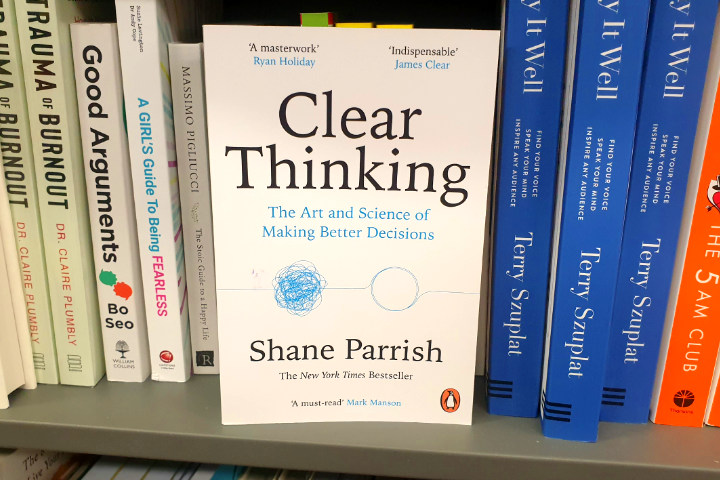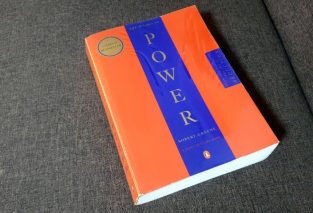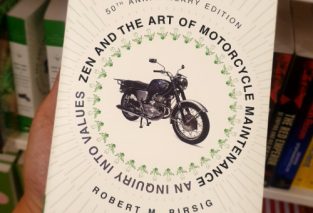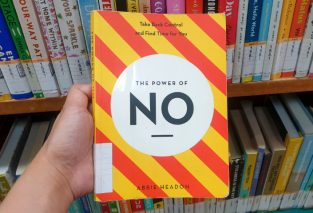A guide for readers to improve decision-making by understanding cognitive biases, enhancing awareness, and applying mental models to think more clearly and make better choices in daily life.

Shane Parrish’s Clear Thinking is a cerebral invitation to better understand the art of decision-making, the mechanics behind clarity, and how we can effectively navigate the complexities of the modern world.
This book offers much more than a mere collection of cognitive strategies. It can be viewed as a roadmap to honing the very thought processes that govern how we respond to the world. How we make judgments. And in teh big picture of things, how we shape the course of our lives.
It focuses on mental models, decision-making frameworks, and training the mind to think with precision in an ever-noisy world.
From the outset, this work impresses with its methodical and engaging tone that doesn’t just talk about the importance of clarity in thought. But offers a toolbox to cultivate it.
One of the book’s key strengths is how it appeals to readers by breaking down complex topics into digestible chunks.
Rather than intimidating us with academic jargon, the writing style invites reflection and encourages the reader to become an active participant in their own intellectual development.
Each chapter feels like a call to unearth and refine the mental clutter that accumulates in our heads over time, to break free from the habitual patterns that often lead to poor choices.
At the heart of the argument is the idea that the quality of your thinking determines the quality of your life.
It’s a simple yet profound truth.
Our cognitive processes shape everything from the decisions we make in our careers to the relationships we nurture.
Don’t be misled to think that this is just another book advocating for “positive thinking” or superficial motivation.
Clear Thinking is rooted in a deep understanding of cognitive science, psychology, and philosophy.
It lays the foundation for how our brains process information, and emphasizes the importance of developing a toolkit of mental models. Frameworks that allow us to cut through the noise and see the world more clearly.
It’s almost like getting a pair of glasses that help you see the bigger picture, especially when life presents challenges that obscure it.
As the pages slowly unfold, it becomes clear that the concept of “clear thinking” is more than just a method for making decisions. It’s a framework for building a life of purpose, avoiding cognitive pitfalls, and learning how to sift through the noise of modern life.
With the precision of a master watchmaker, each chapter is meticulously designed to interlock with the next. Translating complex psychological concepts into digestible insights that can be readily applied in real-world scenarios. A balanced intellectual rigor with accessibility, ensuring that readers from all walks of life can extract value from his work.
The idea of “mental models” is introduced. Which is a collection of tried and tested concepts that allow for a deeper understanding of the world.
Think of them as lenses through which you can evaluate situations, make informed decisions, and solve problems. Lenses through which we view reality, influencing our perceptions and decisions. Conceptual frameworks that help us make sense of the world.
Whether it’s the concept of opportunity cost, second-order thinking, or inversion, the insistence on applying these models to everyday life elevates the process of thinking itself into a discipline.
An art form, if you will.
One of the most powerful aspects of the book is how it uncovers the cognitive biases that often work against us without us realizing it.
These biases, namely confirmation bias, availability bias, and the anchoring effect, are common traps that we all fall into. And yet they go unnoticed by most.
They are brought into the light with clarity, offering practical suggestions for overcoming them.
By recognizing and mitigating these biases, we can train ourselves to make more objective, less impulsive decisions. Enabling us to break free from the limiting patterns that tend to hold us back.
The book serves as a kind of mental hygiene guide. One that offering readers the intellectual tools to clean out the cobwebs and reset the brain’s default settings to a more objective, insightful mode of operation.
But what truly separates this from other decision-making books is its emphasis on the long-term value of clear thinking.
The cultivation of clear thought is not a short-term fix for life’s problems. It’s a lifelong process. One that requires patience, consistency, and practice.
The framework proposed isn’t something to check off a to-do list, but instead a mindset to nurture every day.
The best decisions aren’t just made in the moment, they are made over time.
Clarity and wisdom accrue gradually, like building a muscle.
It’s not about reacting quickly in a crisis. It’s about laying the groundwork for sound judgment before the pressure of the moment arrives.
And just as one does not expect to become fit overnight, one cannot expect clarity to come easily or instantly.
The muscle of clear thinking needs to be worked out regularly to maintain strength.
The insistence on patience and long-term thinking is both refreshing and essential.
It reminds readers that clear thinking is not simply about reacting to external stimuli but learning to proactively shape our responses and filter out distractions.
Also notable is the discussion on second-order thinking. Which is defined as the practice of considering not just the immediate consequences of an action but its long-term ripple effects. It resonates deeply.
This shift in perspective allows for a more comprehensive and thoughtful approach to decision-making. It’s like looking at the chessboard several moves ahead, not just at the immediate play.
Shortcomings
The application of these mental models and thinking frameworks is often presented at a high level, and while the concepts themselves are invaluable, there’s a gap in terms of practical application in everyday life.
Don’t get me wrong. The book does introduce mental models like first principles thinking and inversion. But how can these be applied to the mundane daily struggles, like managing a work-life balance, deciding on personal goals, or handling personal relationships?
It also sometimes assumes a level of familiarity with these concepts that may leave novices adrift.
For readers looking for concrete, actionable steps or more tangible examples that connect these frameworks to daily life, the book might leave them wishing for a bit more hands-on guidance.
The narrative could also have used more engagement with the psychological aspects of decision-making.
While the author leans heavily on the logical and cognitive frameworks, there’s an underlying psychological component that affects how we think. Emotions, motivations, and biases that stem from deeper subconscious layers.
Exploring these internal drivers in more depth would have added a richness to the book, bringing it even closer to the human experience.
Integrating viewpoints from other cultures or disciplines could also enrich the narrative and provide a more comprehensive understanding of clear thinking as a global phenomenon.
Biggest Takeaway
While decisions may seem like isolated moments in time, the clarity we build through consistent thought can change the trajectory of our lives.
This serves as a reminder that clarity in thinking is a skill that can be cultivated and developed, and it is one of the most powerful assets we can have in navigating the world.
By honing our thinking skills, we equip ourselves to face challenges with confidence and discernment.
At one point, a thought popped into my head.
Clear thinking is like a clean window; sometimes you just need to wipe away the smudges.
A humorous parallel between mental clarity and housekeeping. This witty metaphor underscores the belief that clarity isn’t an innate trait but rather a skill that can be refined over time with patience and diligence.
Self-awareness is the cornerstone of clear thinking.
This insight serves as a powerful reminder that true clarity comes from acknowledging our limitations and striving to overcome them.
This book is a roadmap to enhanced reasoning and decision-making skills. And somewhat inspires us to look beyond our habitual thought patterns and embrace a more deliberate approach to understanding the world.




